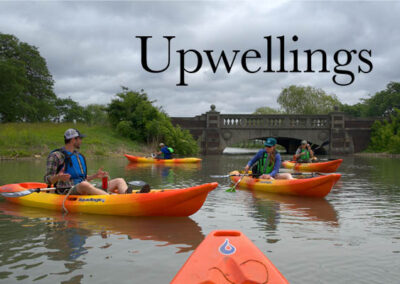
Fishers often refer to these areas as scum lines
Thermal bar formation in eastern Lake Superior nearshore zone along the south shore. | Michigan Sea Grant CoastWatchThermal bars are a characteristic of dimictic lakes of the temperate zone that mix from the surface to the bottom twice each year. During the winter months the Great Lakes are covered by ice and the amount varies depending on the severity of the winter. In the summer the Great Lakes become thermally stratified with temperature derived density differences that separates the lighter warmer water at the surface from the heavier colder bottom waters.
After a long winter the Great Lakes are isothermal or at the same water temperature from the top to the bottom. This is the time of the year when the water temperature throughout the Great Lakes is less than 39 0F (4 0C) and in the absence of any temperature or density differences readily mixes from the top to the bottom. As the nearshore water begins to warm in the spring it becomes lighter or less dense and separates from the denser or colder water farther from the shore. It is in this area of separation where the thermal bar develops. Water inside or nearshore the thermal bar is warmer than 39 0F (4 0C) and water outside or lake ward of the thermal bar is 39 0F (4 0C) or less.
In the spring, as Great Lakes surface water warms it becomes denser producing an unstable environment. This is the time that surface water sinks and develops a curtain of 39 0F (4 0C) water near the shore. Surface water flows toward this thermal bar region from the nearshore and lake ward sides of the lake and there is a pronounced downward flow of water at the point of convergence where the water temperature is 39 0F (4 0C). This is the region called the thermal bar or as fishers call it the “scum line” as insects and debris collect in this convergence zone that attracts fish. As spring warming occurs the thermal bar moves farther away from the shore. The water from the nearshore side of the thermal bar does not mix with water from the lake ward side.
Michigan Sea Grant and Michigan State University Extension provide daily surface water temperatures of the Great Lakes during cloud free periods that can be accessed through Michigan Sea Grant Coastwatch.


